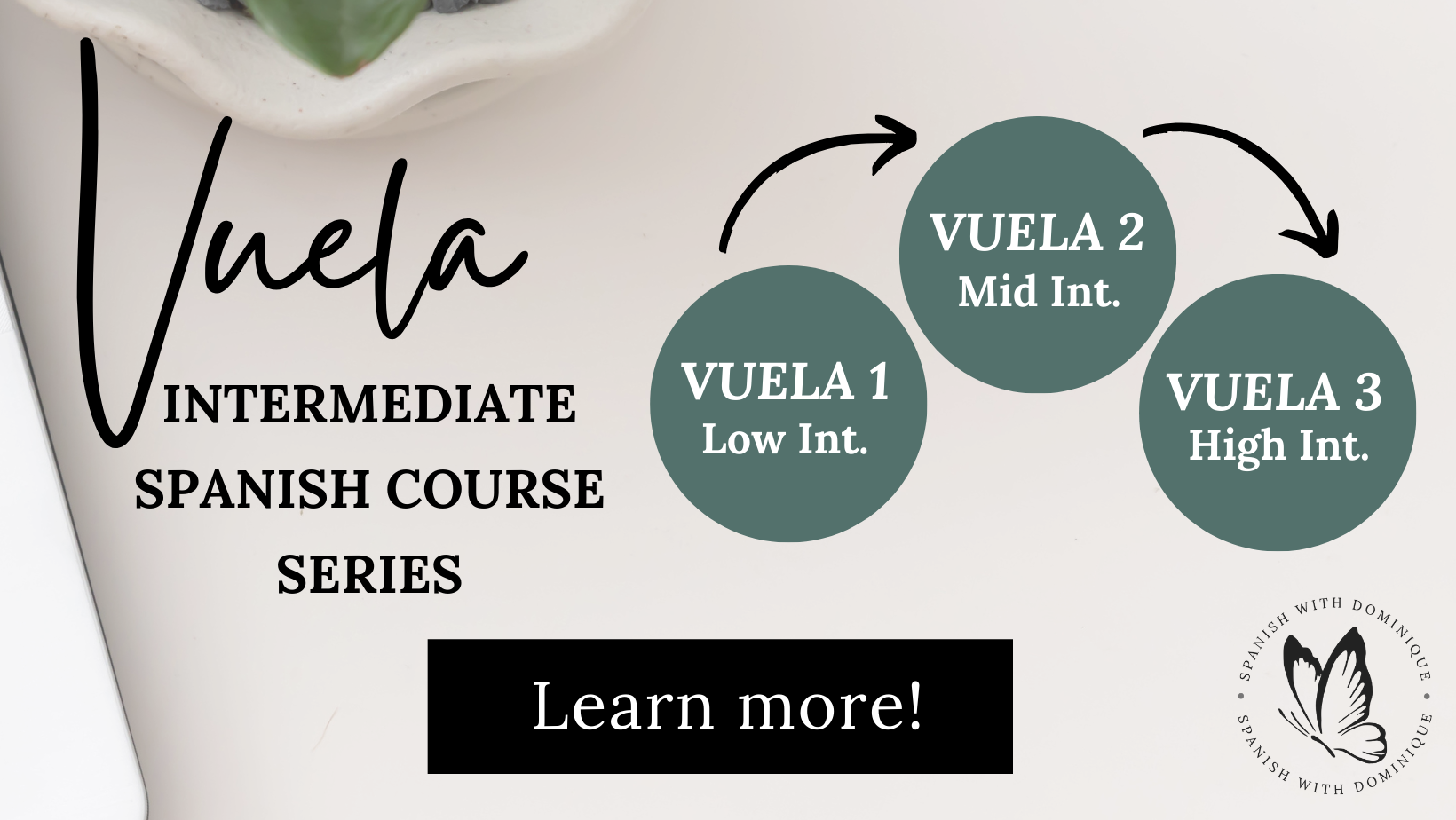5 Creative Ways to Practice Speaking Spanish without a Conversation Partner
In this episode: Five ideas to practice speaking Spanish on your own before having to speak face-to-face with a real person.
Have you ever wondered how to practice speaking Spanish by yourself? Yes, you read that correctly. By yourself.
You’ve probably read a lot of advice that tells you to just “put yourself out there and speak” or just “find a conversation partner.” In fact, you might have heard that so much that it can feel embarrassing to say, “I’m not comfortable enough to speak in Spanish yet".
I know because that’s exactly how I felt when I went to live in Barcelona. I thought I would get plenty of Spanish-speaking practice living in the country. But what I didn’t know when I left is that if you’re feeling too nervous to speak up in the language you’re learning, it makes it really hard to actually practice.
Part of your dilemma as an adult learning Spanish is that the natural way of learning a language is to start by babbling, trying out new sounds, and just improving your muscle memory — like babies do. You have to go through that phase to improve. But as an adult, who wants to babble in front of native speakers?
Today you’ll learn how to practice speaking in Spanish on your own, so you can get comfortable enough to finally join a conversation. I’ll share strategies I learned on my personal Spanish learning journey that helped me feel conversation-ready. And a few extra strategies I’ve developed over my years of working with others on the road to fluency. And I promise you, no babbling like a baby in conversations is required.
While reading this post, consider these questions:
Would you feel most comfortable finding a Spanish-speaking conversation partner right away or gaining confidence on your own first?
Have you ever tried speaking, felt really frustrated or embarrassed, and then just wanted to give up? What are some ways you can move past those negative moments?
Are you someone who quickly joins conversations in your native language? Or do you need some time to warm up to people and find your confidence?
1. Read Out Loud
Reading out loud can be a great addition to your Spanish-speaking practice routine. Here’s a great article by well-known polyglot Luca Lampariello about improving your speaking with reading activities.
I get to see people go from anxious about speaking to comfortable and at ease with their pronunciation — because students in my Elévate Book Immersion Program do plenty of reading out loud. Here’s what one of them had to say:
“I read and sing out loud in Spanish, although I find singing more challenging because it's a faster pace, and I can struggle more with the words. Reading out loud, in particular, really helps me work on my pronunciation and accent. I'll often read the sentence twice - once for understanding and a second time to practice fluent reading.” - Amanda
Can you think of some ways you could include reading out loud Spanish? What about writing in your Spanish journal and then reading it aloud? Or listening to a book or blog post in Spanish and then reading it a bit on your own. Imagine the confidence you’ll gain — without having to feel nervous about ‘messing up’ in front of native Speakers?
2. Roleplay
Do you think it sounds crazy to speak Spanish to yourself? Well, it really works! Es útil y efectivo.
If you’re wondering how to practice speaking Spanish with roleplays, try this:
Think of a hypothetical question a Spanish speaker may ask you
Then think about how you might respond.
Do a little research and then write out a short dialogue on paper.
Read it out loud, focusing on pronunciation and intonation.
In fact, people learning all kinds of languages are doing this. You can even find examples of roleplays for language learning in case you’re not sure how to incorporate this into your own Spanish-speaking practice.
3. Sing Out Loud
Whether you’re in the shower, cleaning the house, or driving in the car, singing Spanish songs is a great way to practice speaking the language.
What are the best Spanish-speaking artists to listen to? The first answer is — whoever you love singing along with! (But, you can’t go wrong with Jesse and Joy, Julieta Venegas, or Shakira).
In fact, here’s a great story of someone with pretty good intermediate language skills who just couldn’t quite manage to speak comfortably and how singing saved him.
What if I told you that I have walked this path myself…or danced along it? Early on in my Spanish language journey, I fell in love with salsa music. Specifically Marc Anthony.
I started working my way through all his songs. I would repeat the lyrics line by line, stopping and replaying if I wasn’t able to produce the sounds until finally, I was singing the whole song without stopping.
It was fun, and in no time, I was rolling my RRs and pronouncing the D correctly. It trained my ear to understand how native Speakers spoke the language. And I learned a ton of new vocabulary and expressions. All that just through singing!
4. Record Yourself
This one might sound weird to you. After all, who wants to hear themselves speaking — especially in another language. But, once you try it, I think you’ll be surprised at how effective it is.
In my experience, people who record themselves (and actually listen to the recordings) improve a lot faster. They often surprise me — and themselves. That’s why, **when working with students 1:1 in my Intermediate Speaking and Writing Program, I have them record themselves reading out loud. They then send me their audio via WhatsApp, and I offer feedback on pronunciation.
I’m thinking now of one of my past students, Kelly. Here is what she said about recording herself intensively during my 1:1 coaching program:
“I really enjoyed the speaking prompts. They were difficult enough to challenge me, but not too hard that I felt overwhelmed. My favorite part, though, was listening to myself speaking Spanish in the recordings. I noticed simple errors that I was making. Now when I go back and listen to my first recording, I can hear how much I have grown.”
You can even combine recording yourself with reading out loud. Just read and record, then play back what you read and observe your accent. You could also record your response to a part of a role-play or just your daily thoughts in Spanish.
5. Change the language on your devices
Maybe you’re not quite ready to speak with a conversation partner in Spanish yet. But what about changing the language on your electronic devices? This way, you could start by talking to your favorite artificial intelligence or ‘robotic person,’ as I like to call them.
If you set your electronic assistants like Siri, Alexa, and Google to Spanish, you will be forced to ask questions and hear responses in Spanish. You might be surprised how often you actually end up speaking Spanish at different times of the day this way. And you can even get your directions in Spanish — if you’re ready for an adventure!
Your key takeaways as an adult who wants to start speaking more Spanish:
If you’re not feeling confident, comfortable, or ready to start speaking Spanish with a conversation partner yet, you’re not alone.
Nervousness plays a huge role when it comes to building the confidence to speak in another language. Take note of how you are feeling and what you feel ready to do.
And remember, there are many other effective ways to practice speaking Spanish. Try one of the strategies in this blog post, like reading aloud, singing aloud, recording yourself, and role-playing in Spanish.
If you keep it up, even a few times a week, you’ll feel a real boost to your Spanish-speaking confidence. And you may just find yourself conversation ready sooner than you expected.
More Posts Handpicked Just For You!
Enjoyed this post? Here are some more you might like.






